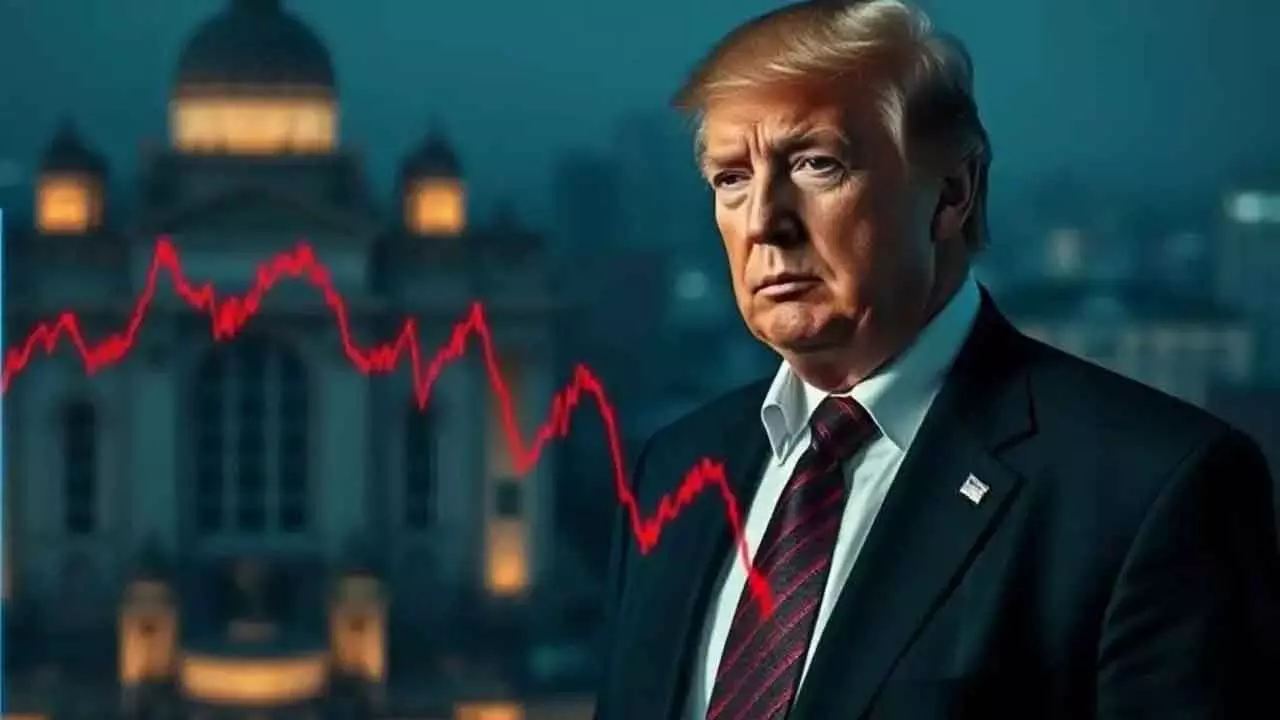Risks Rise For Indian IT Sector As Trump Tariffs Roil Markets
Risks Rise For Indian IT Sector As Trump Tariffs Roil Markets

The global financial system is currently going through a transition. The Trump administration imposing tariffs on all of US’ trading partners can be marked as one of the most significant events since the beginning of globalisation. Many see this move as turning the clock back in the globalisation space amid a rise of nationalist and protectionist trade measures. No wonder, markets world over has been going through severe fluctuations.
The US equity markets have lost more than $six trillion of market cap in a week. More importantly, one that does not augur well overall, the US-China trade war appears imminent. On Tuesday, Trump administration announced imposition of 104 per cent tariff on the second largest economy after it threatened reciprocal tariffs on the US. Against this backdrop, India is closely evaluating its next steps. Indications are that India is currently negotiating a trade deal with the US to mitigate the risks arising from such significant event. However, its impact on many services, including IT services cannot be ignored.
Notably, IT comes under service sector, which, incidentally, has not been touched by the Trump administration. But software services industry will definitely see second order impact coming from Trump tariffs. Indian IT services industry is a truly globalised industry with more than 90 per cent of revenue coming from foreign countries. For large and mid-tier IT companies, around 50 per cent of revenue is coming from the US and 30 per cent from Europe. And both these regions will be severely impacted by Trump tariffs. Firstly, enterprises in the European region are likely to hold back technology spends till trade terms negotiation between the US and EU.
The region, which has given several large deals to Indian IT industry in the last two years, may not sustain that momentum in FY26. Similarly, things are going to be tough for US enterprises. Most experts see inflationary pressure returning to the American economy as prices of many articles keep rising. It means companies that are expected to optimise cost over new spend in the coming quarters. In the last two quarters, the BFSI (banking, financial services and insurance) vertical has seen recovery. As one third of revenue of large and many mid-tier IT firms comes from BFSI vertical, this recovery was seen as a silver lining for future growth prospects.
Therefore, it has to be seen how BFSI sector gets impacted by the tariffs. Secondly, verticals like manufacturing, retail, hi-tech, automotive, aerospace, and others are likely to be adversely impacted. Therefore, growth prospects of Indian IT industry during FY26 will not be very encouraging. Against this backdrop, such firms have to devise ways to mitigate the risks that are bound to arise. Diversifying of portfolio with thrust on a more refined geographical distribution seems to be on the cards. Moreover, cost optimisation deals are expected to see an uptick in the coming quarters as the full impact of the tariff play out in the coming months. Overall, Indian IT sector has to navigate carefully to reduce the impact of Trump tariffs on its portfolio.

